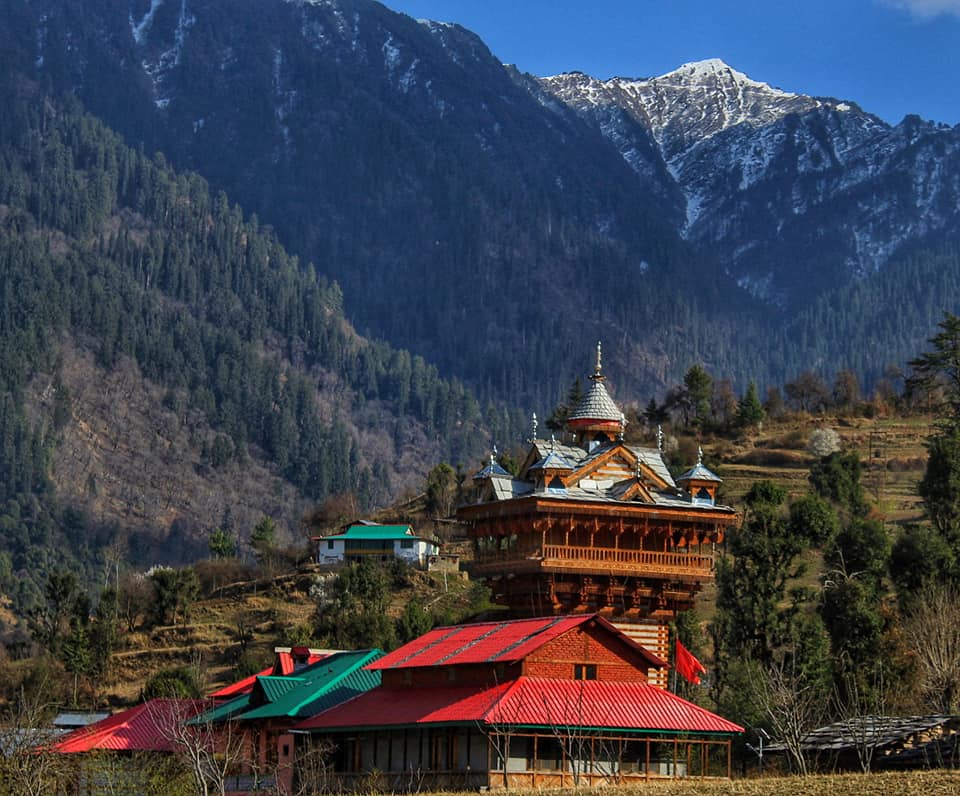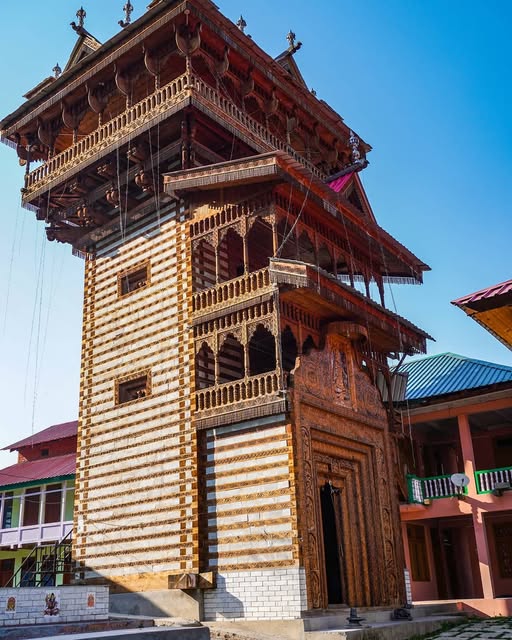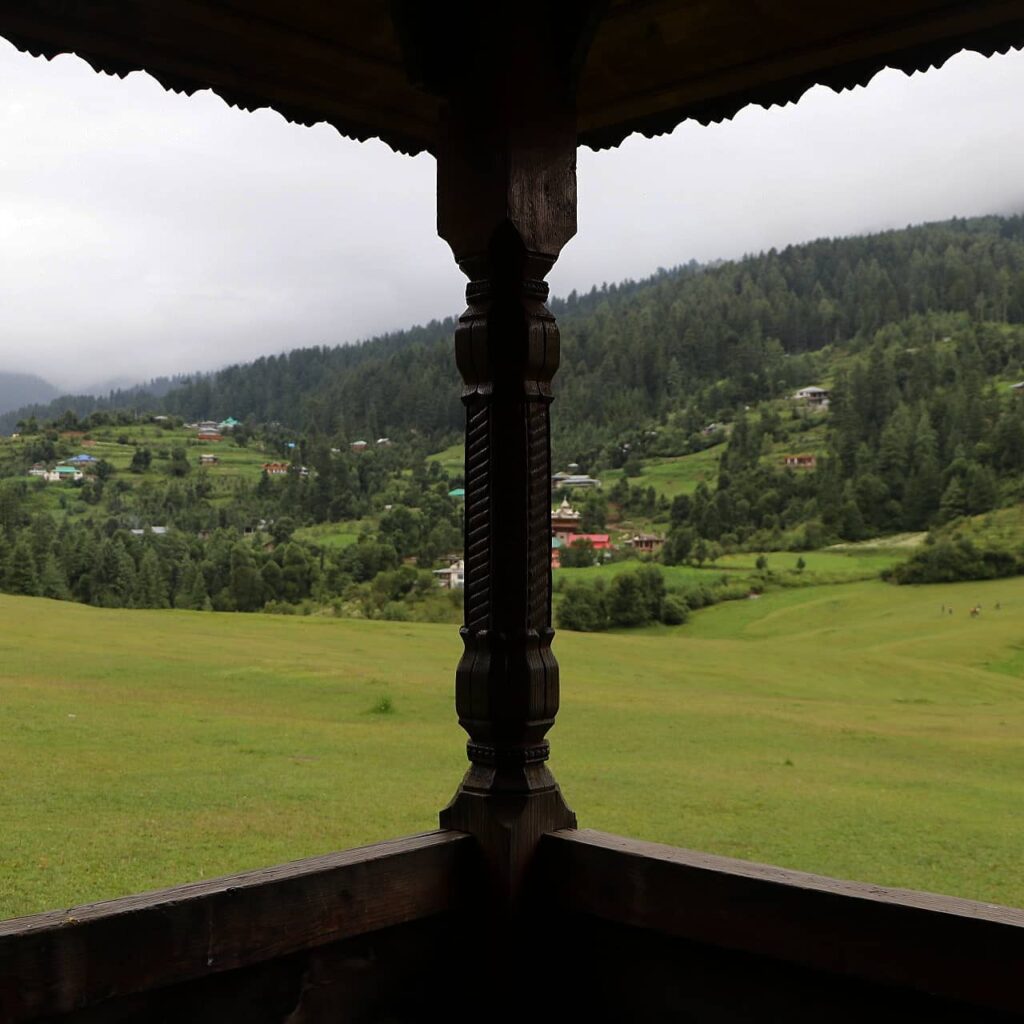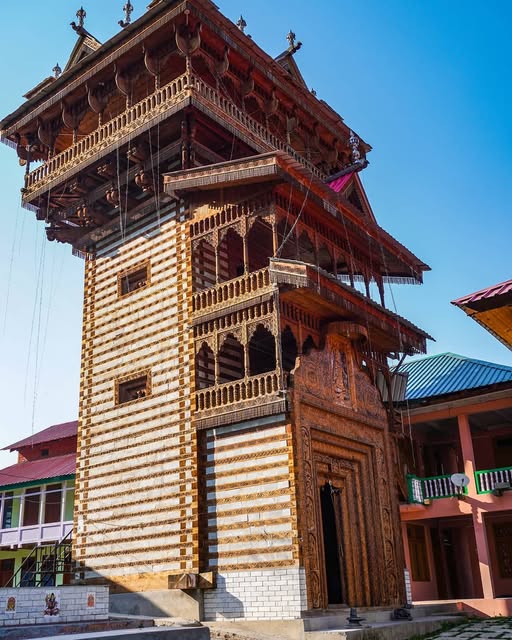Disclosure: This post may contain affiliate links.
The first time I heard about Shangchul Mahadev, someone called it the Lovers’ Temple. That was enough to spark my curiosity. I was already in Shangarh when I decided to walk to this sacred spot, tucked into a quiet corner of Sainj Valley. The trail wasn’t long, but something about the place made it feel like I was stepping out of the real world.

This isn’t a temple you visit for the photos. It’s one you visit for the stillness, the stories, and maybe, for a little bit of hope.
A Legend of Love
Locals told me the legend as we sat by the meadow. A couple in love had once sought refuge here. When their union was opposed by society, they gave up their lives. The gods, moved by their devotion, blessed them with eternal togetherness. Since then, Shangchul Mahadev has been a symbol of love that defies all odds.
History and Mythology of Shangchul Mahadev
The story of Shangchul Mahadev goes back to the Mahabharata. It’s believed that the Pandavas stayed here during their exile. When the Kauravas discovered their location and arrived to capture them, the Pandavas took refuge at this very temple and prayed to Lord Shiva for protection.
Moved by their prayers, Mahadev declared that anyone who steps into his territory will be under his divine protection. The Kauravas, fearing Shiva’s wrath, turned back.
Even today, this tradition continues. Lovers and couples who have run away from their homes, crossing boundaries of caste, religion, or social status, seek safety and shelter at Shangchul Mahadev. No one is allowed to harm them here. The village’s Brahmin community takes care of their food and other needs until their families reach an agreement or understanding. The temple is not just a religious site. It is a place of refuge and protection for all.
Read More: Why Shangarh Should Be on Your 2025 Travel Plans
Architecture of Shangchul Mahadev
The Shangchul Mahadev Temple is a beautiful example of Kath Kuni architecture, a traditional building style found in the mountainous regions of Himachal Pradesh. The structure is made using alternating layers of thick wooden logs and stone masonry, without the use of mortar. This interlocking technique makes it both strong and suited to withstand earthquakes and harsh Himalayan winters. The multi-storied layout and solid base give the temple a distinct presence against the backdrop of deodar forests and open meadows.

What truly stands out are the intricate wooden carvings along the door frames and pillars, often depicting local deities, nature, and mythological scenes. The roof, likely made from slate stone, reflects typical Himachali design—functional, weather-resistant, and grounded in local materials. This blend of practicality and craftsmanship makes Shangchul Mahadev not just a spiritual centre but a stunning example of traditional Himachali architecture.
A Place of Peace

People come here to pray to Lord Shiva, but even if you’re not spiritual, the calm hits you. I spent a long time just sitting by the steps. I saw an old woman light incense, a child roll around in the grass, and a backpacker sketching the temple outline in his notebook. It felt like a place where everyone was allowed to just be.
You can visit Shangchul Mahadev on your trip to Shangarh or club it in your Manali tour pacakge.
Nature All Around
If you’re backpacking in Shangarh, this is one trail you shouldn’t skip. The walk to the temple takes you through thick forests, quiet hamlets, and small apple orchards. The air smells like pine and wet earth. On clear days, the views stretch to the snowy peaks of the Great Himalayan National Park. It’s not a hard trek, but it rewards you with far more than scenery.
Read more: Overtourism in Himachal Pradesh – How to Be a Responsible Traveler
Festivals at Shangchul Mahadev

During Maha Shivaratri, the temple becomes a hub of celebration. I didn’t get to experience it but you can see folk songs, people dancing in traditional clothes, and food stalls lining the edges of the field. It’s the kind of celebration that still feels rooted and community-led.
Final Thoughts
If you’re visiting Shangarh or anywhere in the Sainj Valley, make time for Shangchul Mahadev. It may not be on every guidebook’s list, but it should be on yours.
Follow me on Instagram @daily.passenger and YouTube @DailyPassenger for more travel stories from offbeat corners of India.
Discover more from Daily Passenger Travel Blog
Subscribe to get the latest posts sent to your email.
